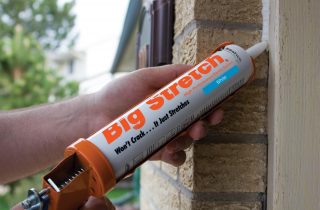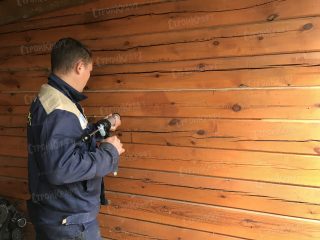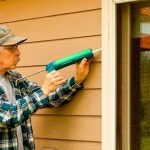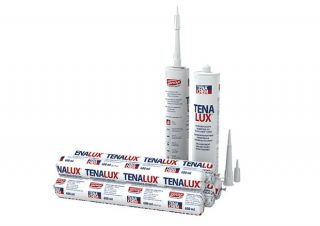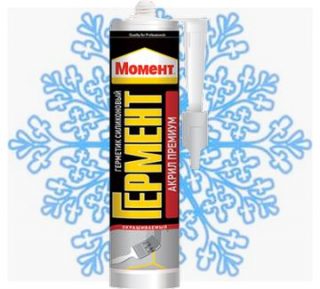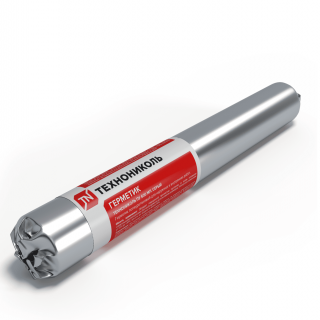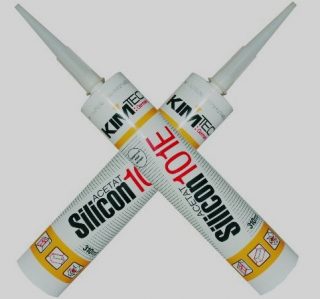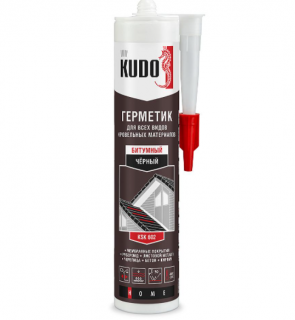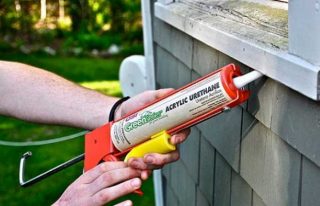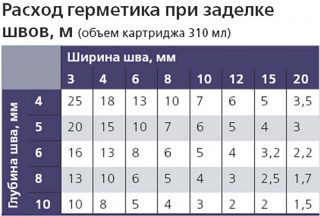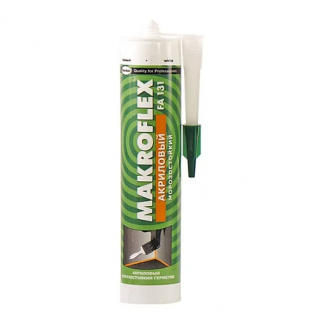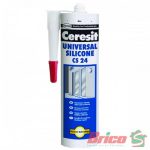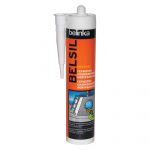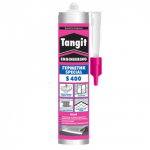In the process of installing metal roof structures, sandwich panels, concrete products, it becomes necessary to seal the joints between the elements. For these purposes, a frost-resistant sealant for outdoor use is used. Special requirements are imposed on the material, since rain, snow, frost and wind act on the seam. The composition ensures the tightness of the joints throughout the entire service life
Features of the sealant for outdoor use
Structure outdoor sealant:
- base - silicon polymers, rubber;
- thickeners to adjust viscosity;
- fillers (silicon flour, crushed lime);
- fungicides, antiseptics;
- plasticizers;
- coloring pigments.
Frost-resistant sealants are produced in plastic tubesthat are inserted into the pistol. The volume of containers can be from 280 to 510 mm.
Facade and roof insulation is made in the fresh air, so the presence of a pungent odor does not matter.
Requirements
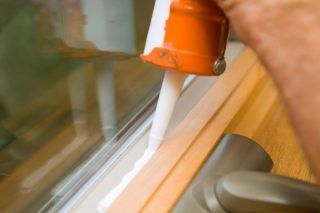
Temperature fluctuations occur at night and during the day, as a result of the coating of the facade, roofs increase or decrease the volume. The sealant connects materials with different coefficients of linear expansion, therefore must stretch and shrink, then return to its original position without cracking.
A quality sealant meets the requirements:
- adheres well to all materials, does not lag behind vibrations and deformations;
- under the action of insolation, moisture, frost is not destroyed;
- matches the color to the surface, is invisible on it;
- easy to apply.
The requirements for moisture impermeability are added to the roofing sealants, so as not to let rain and melt water into the under-roof space.

Scope of application
- frame construction - sealing gaps between panel materials;
- installation of windows, balcony fillings - sealing of seams between frame structures, between boxes and slopes, ebbs;
- facade finishing siding, plastic, porcelain stoneware, clapboard, cement particle panels - sealing of joints;
- roofing device - filling of joints between strips of soft roofing, metal tiles, slate, corrugated board.
When installing drainage elements on the facade, the joints of pipes, gutters, corners are sealed with a sealant. The composition is used to repair tiles on the basement, surfaces of wooden and stone walls.
Varieties of frost-resistant sealants
Distinguish types depending on the type of base:
- acrylic;
- rubber;
- polyurethane;
- bituminous.
There are varieties for use separately for wood, concrete, glass... By color there are transparent, white, black, colored options.
Acrylic
Features of acrylic sealant:
- when heated by the sun, the mixture softens, after freezing it hardens - it can peel off the surface;
- the sealant does not withstand prolonged exposure to water, although it can cope with wet fumes and short exposure to rain.
Sealant classified as environmentally friendly products, therefore, the composition is used in unheated residential premises, for example, loggias, balconies, terraces. After hardening, the mass allows steam to pass through, suitable for wooden surfaces with similar characteristics.
Polyurethane
The qualities of the polyurethane insulator:
- two-component compounds are used for external seams with a high degree of deformation, after hardening, a rubber-like seam of high elasticity is taught;
- one-component ones serve well on the roof, they are successfully used for the repair of facades.
Sealing types are used under normal conditions. Waterproofing choose for high humidity, for street surfaces that are in contact with water for a long time.
Rubber
Sealant characteristics:
- multifunctional waterproof material is used to seal movable joints;
- suitable for filling seams on window and door frames, slopes;
- does not deteriorate from ultraviolet radiation, low shrinkage;
- high adhesion to surfaces.
Outdoor silicone sealant is divided into acidic and neutral. The first type is cheaper, has a pungent vinegar smell. Such a composition cannot be used on metal, polystyrene, since it will corrode it. Neutral ones have increased durability, without a pungent odor.
Bituminous
Features of the bitumen composition:
- adheres well to metal, tiles, bitumen, stone, concrete;
- does not collapse with prolonged exposure to the sun;
- moisture resistant, protects the surface from leaks.
The material is released in buckets, in tubes. For application, use a spatula, brush or sealant gun.
With the help of a bitumen composition, the seams are insulated, rolled materials are glued to the roof, and the connections of the elements of the drainage system are coated.
Criterias of choice
Before purchasing a low-temperature insulator for the facade, the conditions in which the sealant will work are assessed.
Factors are taken into account:
- temporary and permanent exposure to moisture, direct ingress of water;
- the need to paint the seam surface in a general tone;
- average daily temperature in winter;
- the degree of vibration, deformation, load.

Recommendations for use
Terms of use:
- get rid of ice and snow in winter;
- the edges of the seams are primed, wait for drying (3 - 4 hours);
- in deep seams, an anti-adhesive gasket is used in order to save the mixture;
- for the composition in a tube, take a pistol, mixtures in containers or diluted before use are applied using pumps (self-priming pistols);
- in cold weather (below + 5 ° С), the hardening of the composition slows down.

Consumption
For compounds that have a triangular base at the base, the result obtained for 1 p / m is halved. Manufacturers usually indicate the consumption of material on the packaging.
Manufacturers rating
Compositions BELINKA suitable for ceramic materials, wood, plastic, adheres well to glass. Outside, they provide reliable insulation of the seam from water, blowing.
Greek firm TANGIT produces compounds of high quality, with good characteristics, which waterproof the joint from water penetration, prevents the development of harmful microorganisms. They use new technologies in production.
Well-known proven manufacturer CERESIT manufactures a wide range of sealants for various applications, including for facades. The products are of high quality, elasticity, UV and stress resistance.

